Bucket List: Iceland’s Natural Wonders
Category: Bucket Lists
A Bucket list trip to Iceland
September 10, 2024– Iceland is both a cold country, and one of the hottest tourist destinations in the world. It is the perfect place for a retirement trip. This giant island country in the North Atlantic attracts tourists from all over the world to experience its many natural wonders. There are many ways for retirees to experience its charms, which we will explore in this article.
About Iceland
This island country, a member of the European Union, is being formed by the separation of the American and European tectonic plates. As they have come apart over the millennia, magma and lava have come out of the earth’s core to form the land. They are still separating at the rate of about 2 centimeters per year – in many places you can stand with one foot in Europe and the other in America.
That land building has created the many sights that people come to experience. There are giant extinct volcanoes to climb, deep blue lakes formed by glaciers and and volcanic activity, immense and intricate lava fields, and gigantic waterfalls. Not to mention a long and beautiful coastline.
How to experience Iceland
There are several ways to get your Iceland experience. You can come on a ship that circles around the island, and which might make other stops in Greenland, Scotland, and Scandinavia. Land based tours come in every possible variation from sightseeing, hiking, skiing, fishing, to ice climbing Or, you can rent a car and drive around the ring road which circles the country, which provides an opportunity to experience most of the major sights. Internal air flights are easy if you don’t want to drive long distances. You can have an Icelandic vacation that ranges from fairly easy with some walking required to get to the sights, to intense physical activity.
Don’t Miss Out on Your Dream Retirement Spot
Free Weekly “Best Places” Newsletter – with Free Report
Top sights
Your editor’s recent visit was limited to covering Reykjavík and parts of the northeastern area of the country. Reykjavik, the capital city, is compact and interesting, with about half of the country’s 400,000 inhabitants. Two highlights not to be missed are Harpa, an impressive performing arts center on the harbor, and Hallgrímskirkja, the unusual Lutheran stone cathedral atop a hills. Take a walking tour to understand to explore the history of this young nation, which was first settled in the 800’s. After exploring the capital, we flew to Akureyri to begin our outdoor adventures, using MT Sobek as our tour operator.
In our 6 days in the northeastern part of Iceland most of the time was mostly taking up with hiking, sightseeing and eating (the food was good, although there are some strange dishes). We experienced giant waterfalls, dormant and smoking volcanoes, lava fields, hot springs, glistening glaciers, and deep fjords. Many people come to see the northern lights at certain times of the year (it was too cloudy when we were there). Others visit for the salmon and char fishing, and it is possible to hunt reindeer (but none with red noses) with the right luck and and an expensive permit. We did not visit the center of the country, which is largely vacant and inaccessible and covered by glaciers.
Highlights
On our first day we took a short hike Dettifoss, the most powerful waterfall in Europe. Its gigantic flow is fed by far away melting glaciers.
Fossholl is another enormous waterfall.
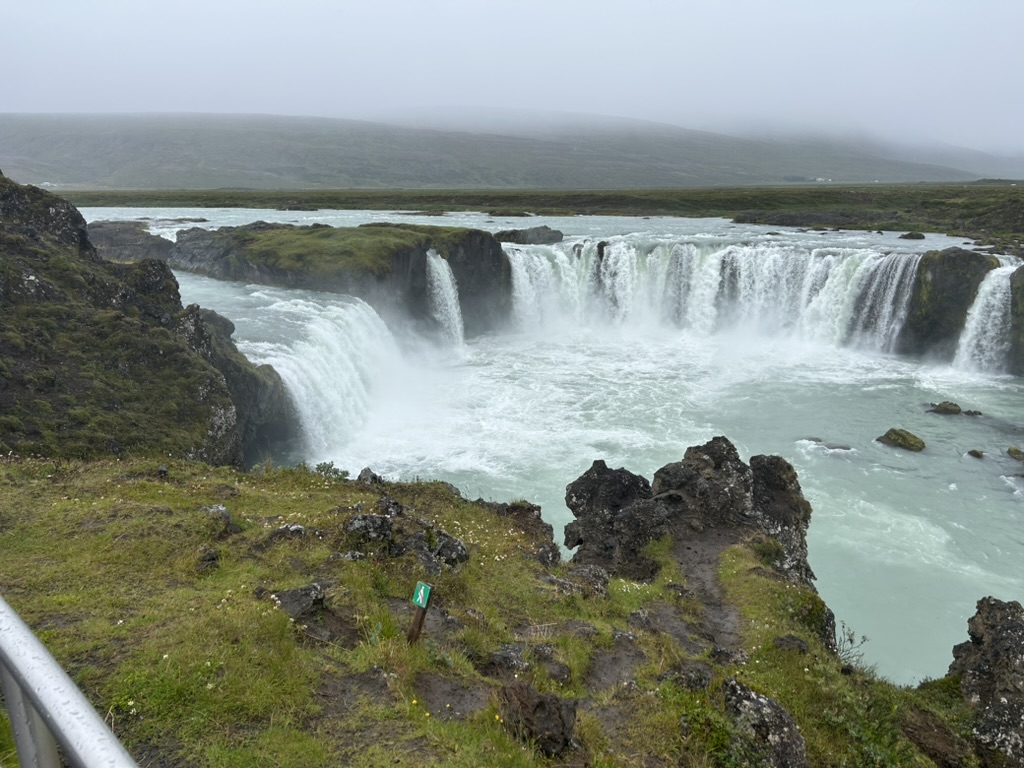
in Kopaakur we experienced crazy lava shapes formed as volcanic lava ran and cooled.
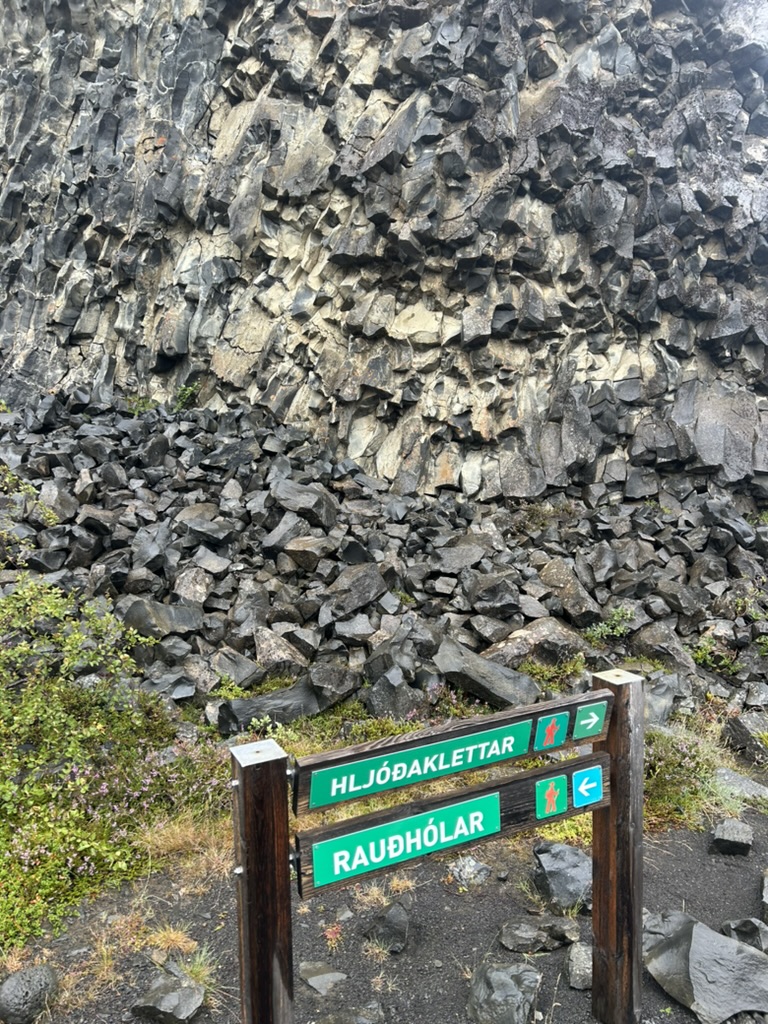
Heverfjall is a huge extinct volcano that you can climb up to see the chasm created by its explosion.
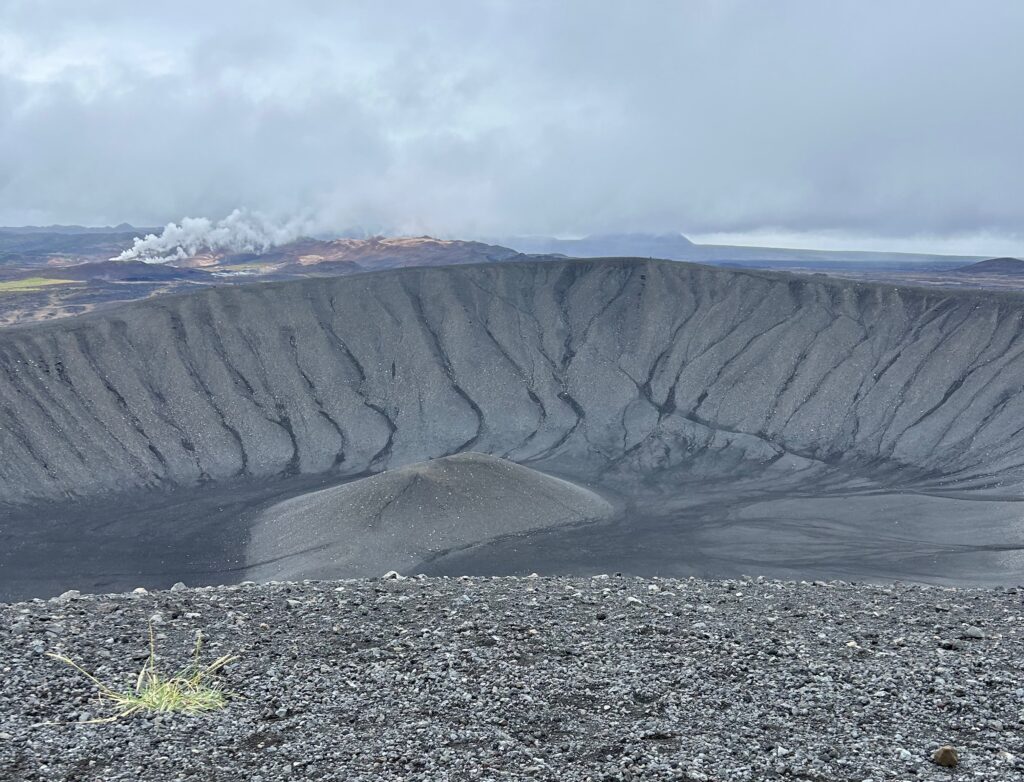
Kopasker features the crazy and unusual shapes created by cooling lava. This one looks like a dog’s head. Below it is the nearby red mountain of lava.
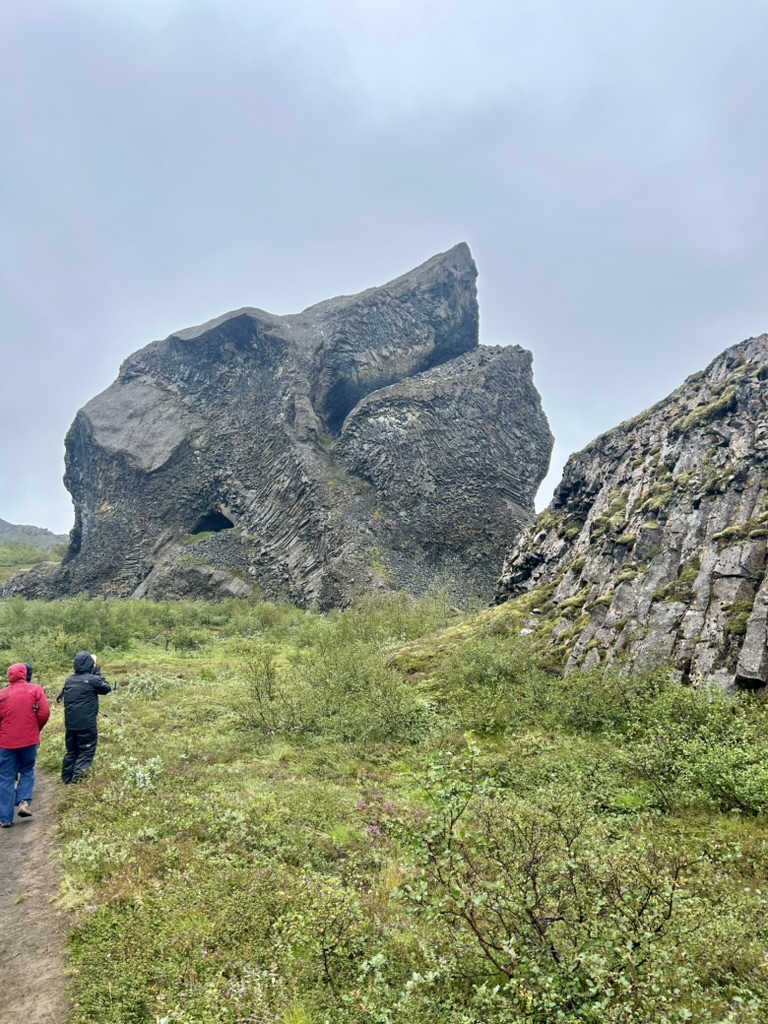
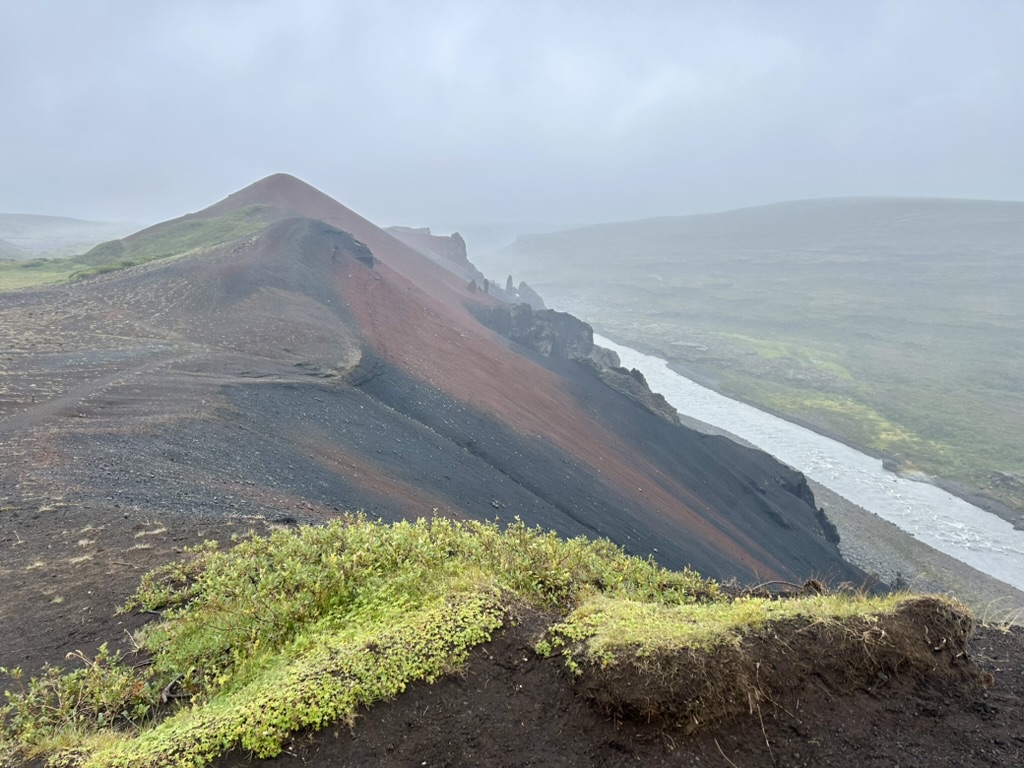
We had dinner one night in Husavik, a town on the north central coast with a beautiful old church and busy harbor. If you are on a cruise you will probably stop here too.
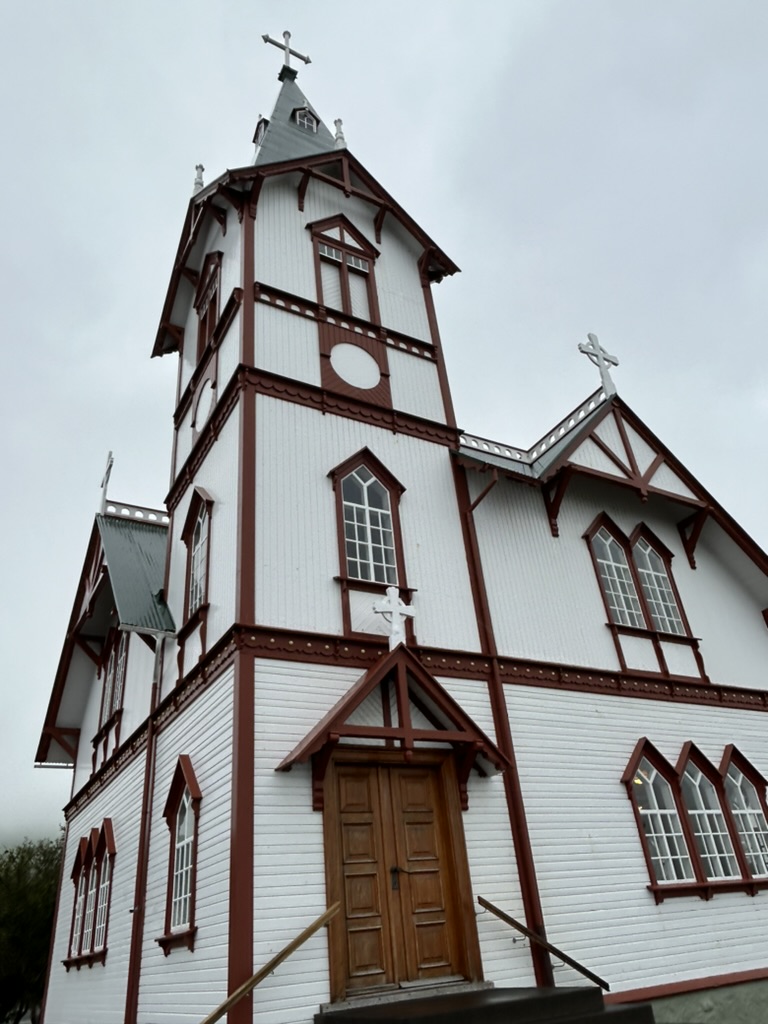
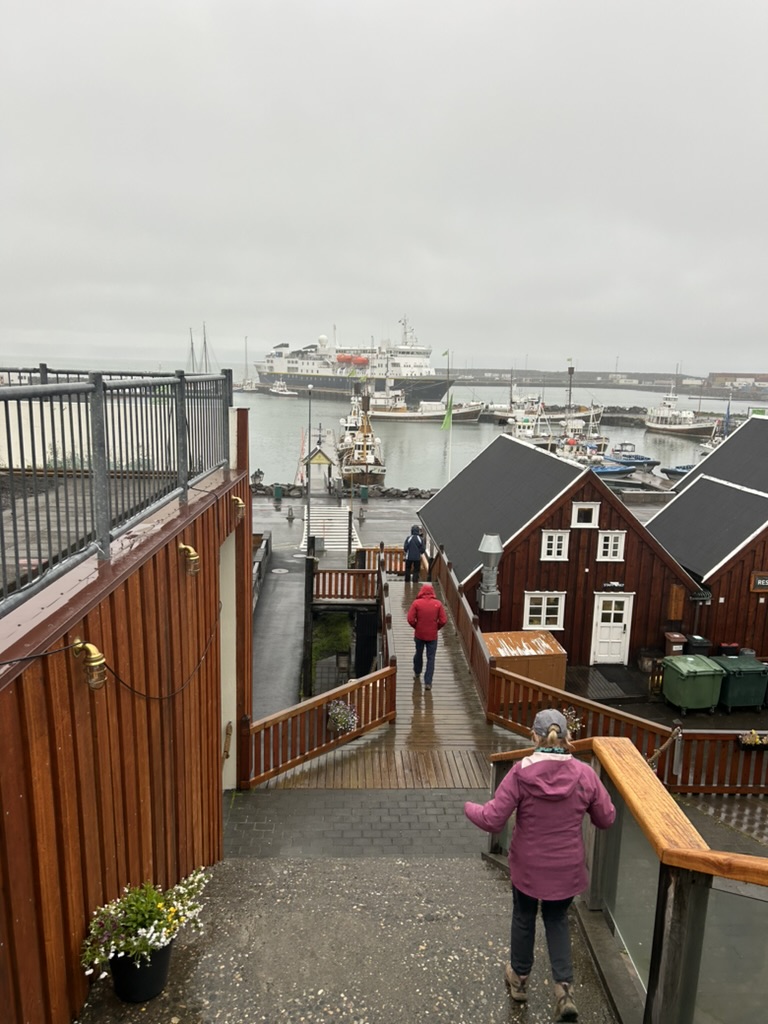
In this picture your editor has one foot in Europe and the other in America, thanks to the shifting tectonic plates underneath. This was on our hike through the giant lava fields in Leirhnjukur.
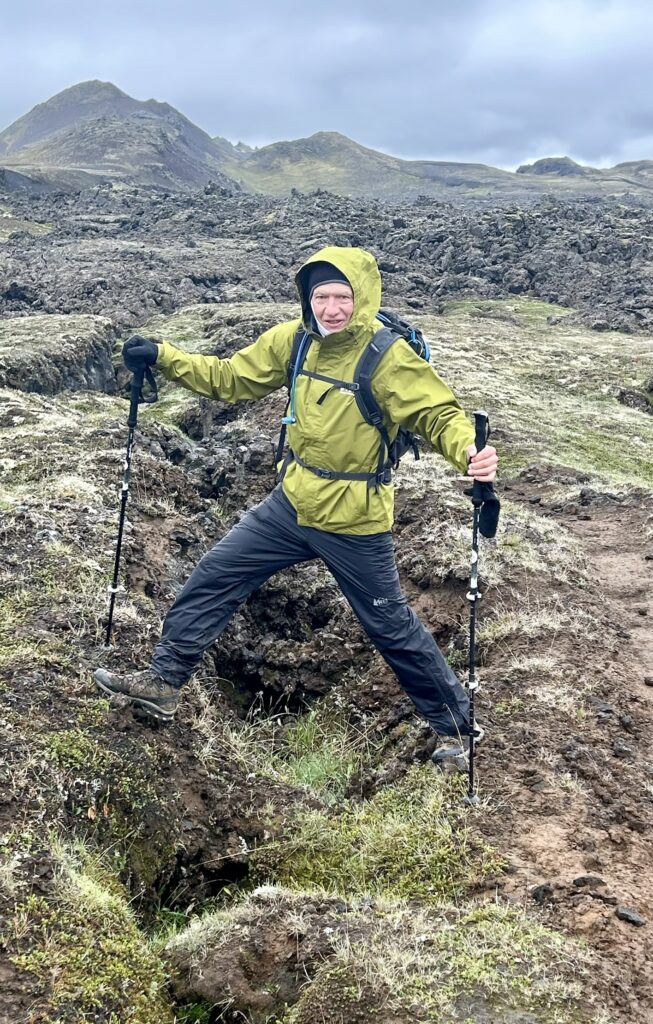
One of the many amazing sights are the vertical lava columns and waterfall in the Stuolagil basalt canyon.
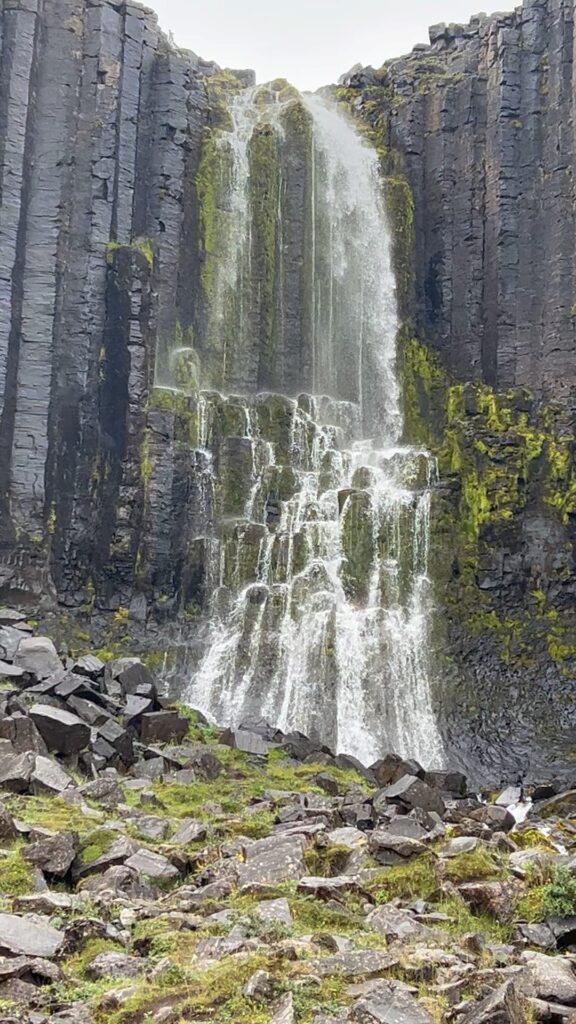
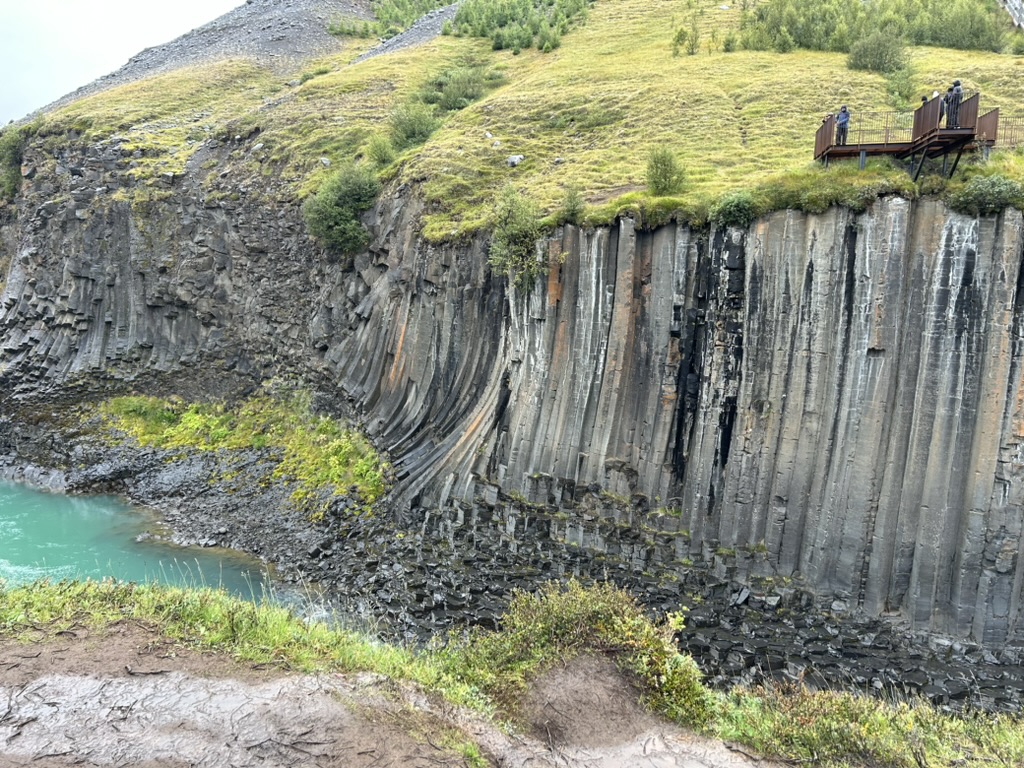
Seydisfjordur – colorful town at the end of a fjord visited by cruise ships and the ferry from Denmark.
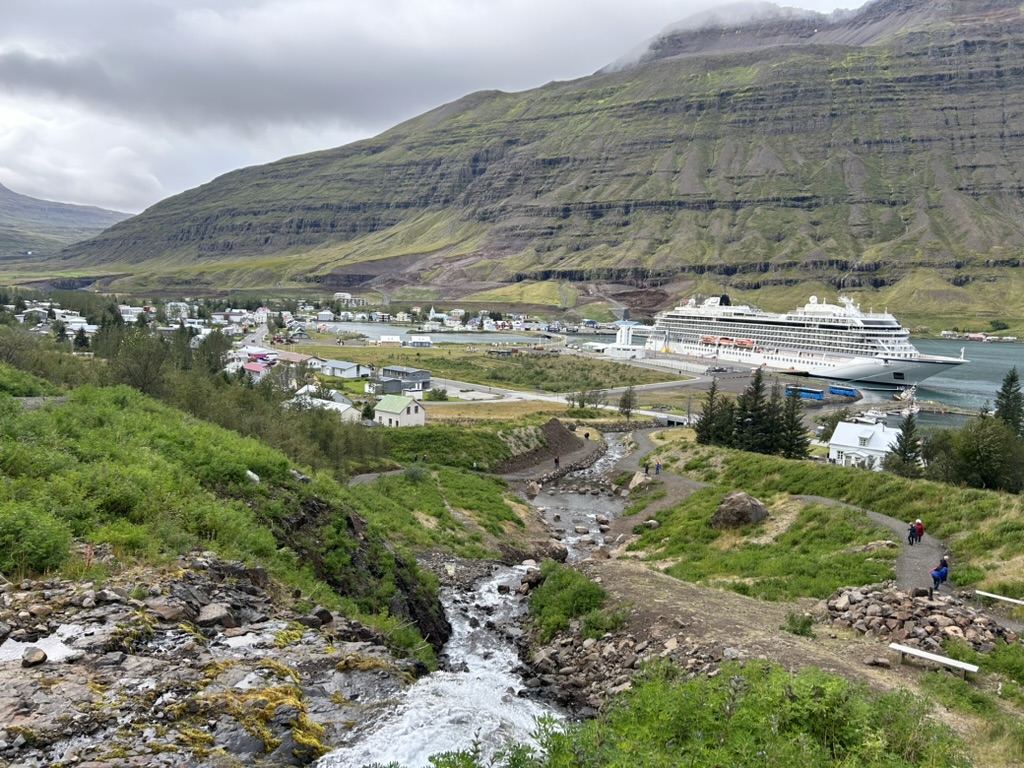
Hengifoss is the third tallest waterfall in Iceland, which requires a short but steep hike to visit.
We drove in a cold rain to Backageroi to see the puffins, but found out they had flown away for the winter a few days before. When here, they nest in these holes.
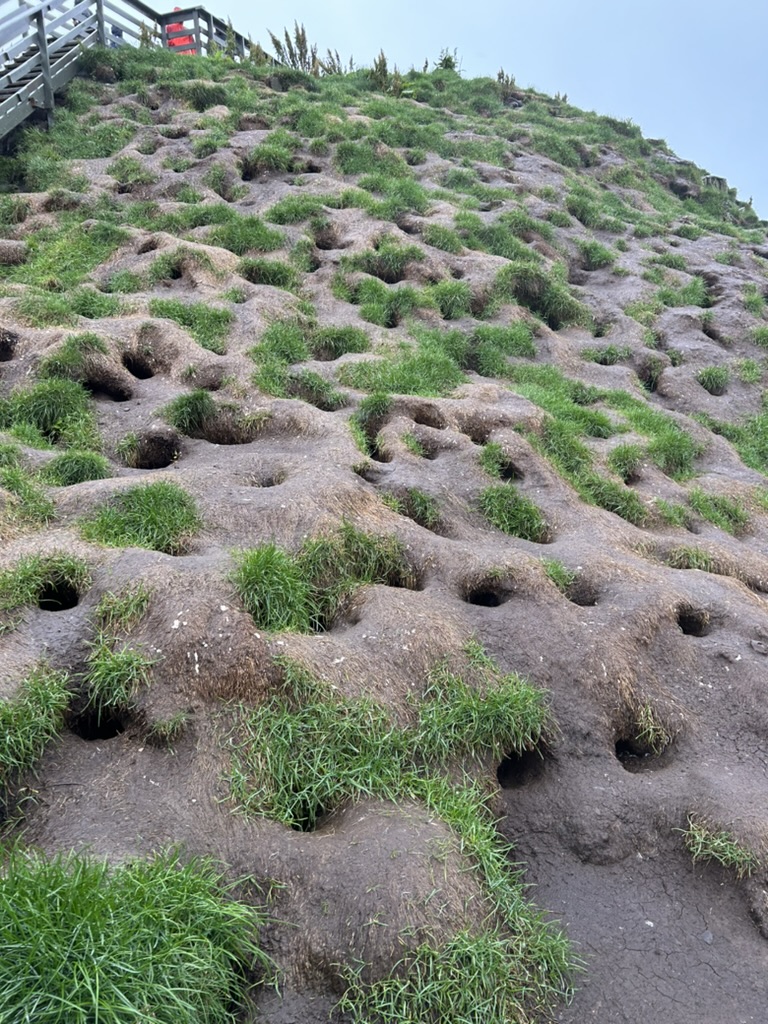
Geothermal baths.
Don’t miss going to one of the gigantic open geothermal baths. The Blue Lagoon near the airport is world famous for its soothing warm blue waters and sandy bottom. But it might be more fun to go to one in a different region that is not so built up. We enjoyed the peaceful, soothing geothermal waters of Myvatn
Nature Baths.
If you come
Prepare for the weather! Even in summer it is cold in Iceland and it can rain, or even snow, at the drop of a hat. It is essential to bring a good raincoat, rain pants, warm hat, gloves, and rainproof hiking shoes. You do not want to get wet and cold, so be prepared with layers. Many of the best sights involve walks of a half mile or more.
Summer is the best time to visit. Unless you want a really cold weather adventure.
Cost. Because almost everything is imported, this is a very expensive country.
Tour group. Pick your tour group carefully, particularly see if their itinerary matches your interests.
Bottom line
Unless you spend several weeks in Iceland you can only an experience a small portion of this big country. We only saw a small part of it, but enjoyed every minute, even in the rain!
Comments
Have you visited Iceland, or would you like to? Please let us know where you went or want to go in the country. Do you have other bucket list trips you would recommend?


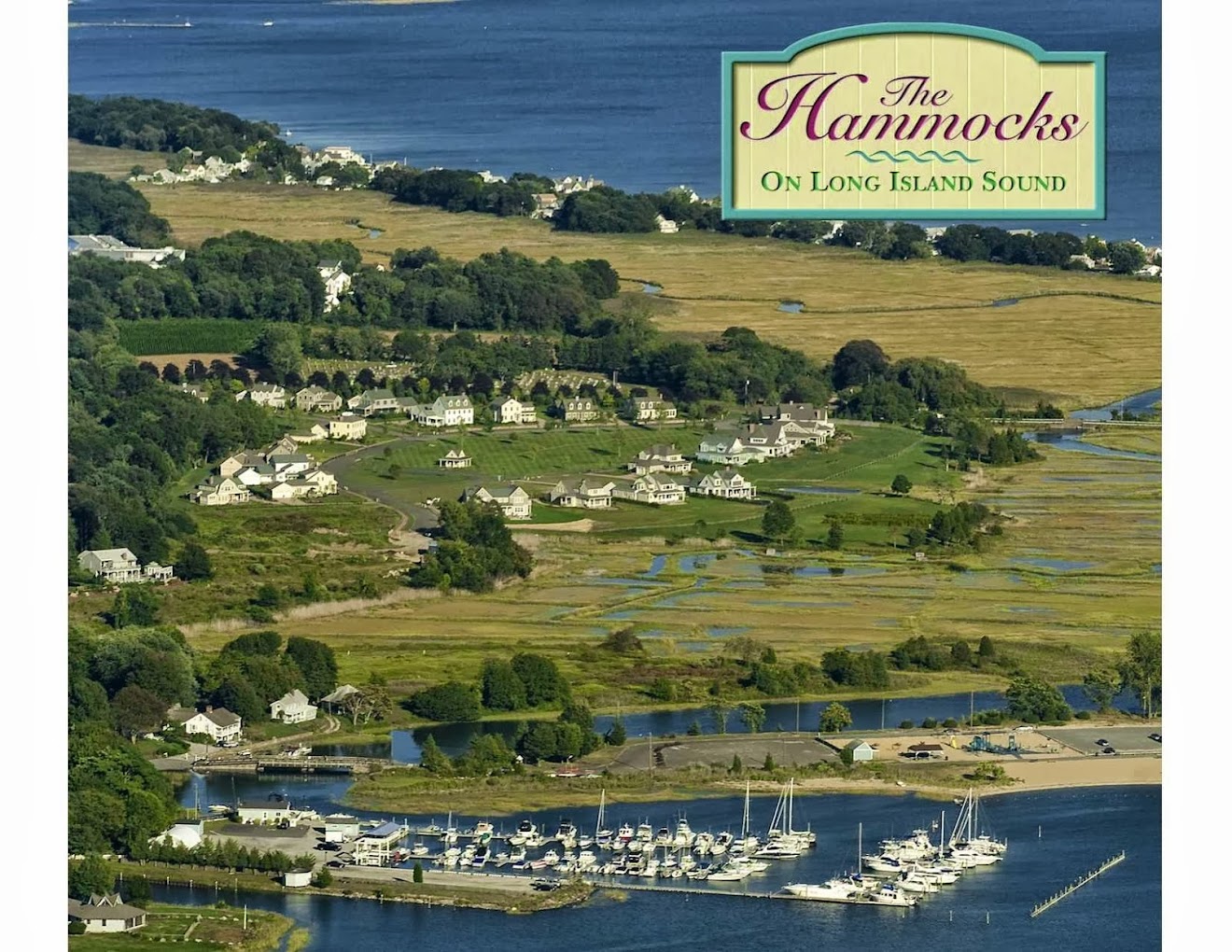
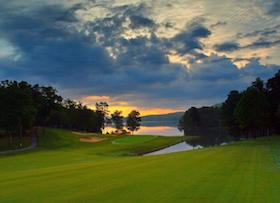
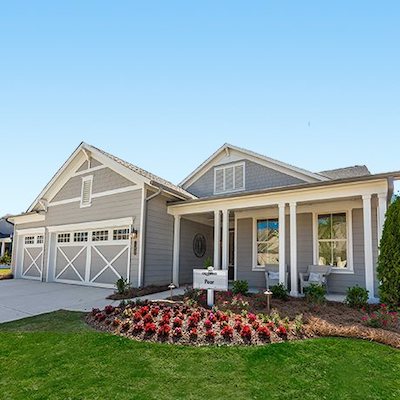

Comments on "Bucket List: Iceland’s Natural Wonders"
Admin says:
One of the neat things about Iceland is its energy situation. Sitting there with enormous geothermal potential, almost all electricity is either from geothermal or hydro. Electricity is so cheap that aluminum ore is shipped here from Australia and smelted into aluminum. If they were to move to total electric cars and trucks they could reduce their oil imports to almost zero. Wind is another potential energy source. All of that is a good thing, since just about everything Iceland consumes is imported.
Mar says:
We just went to Iceland, Greenland and Norway on a cruise. The countryside was beautiful, lots of waterfalls and fjords. Saw a little bit of the Northern Lights and the camera saw it better than we did. It was a great visit but I would not go by a cruise again, rather go by plane and small tour group.